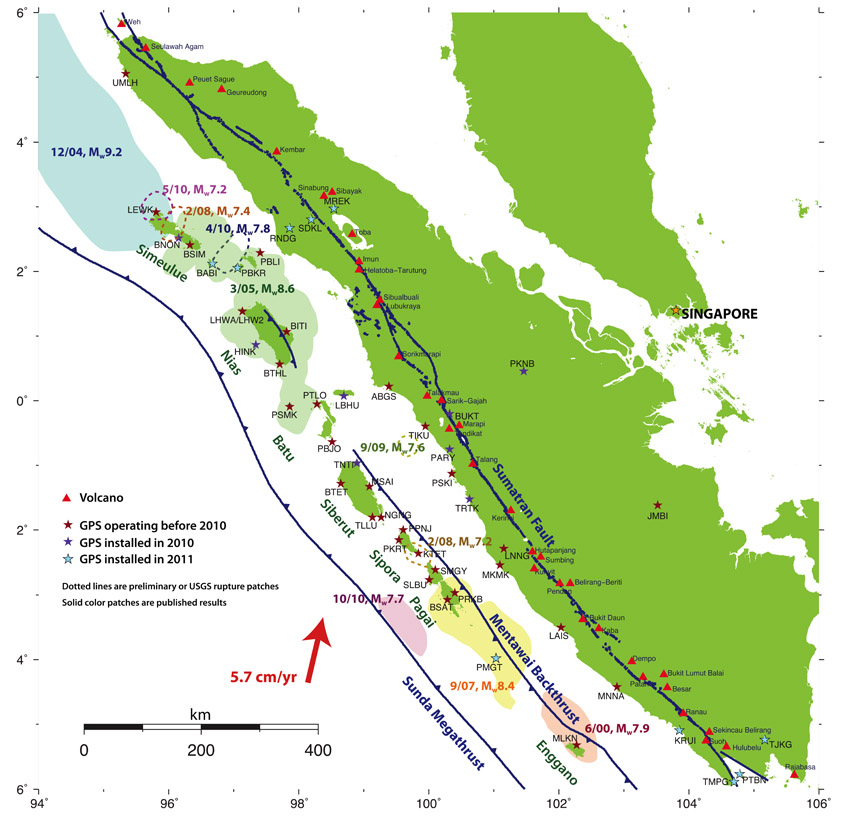Sumatran Tectonic Geodesy (SuGAr)
SuGAr has been observing surface deformation in Sumatra since 2002. The long time series are now a treasure trove of interesting signals and questions, and are providing us with a great opportunity to examine changes in time and space in deformation patterns related to the Sumatra subduction zone. In the last few years we have installed a large number of new stations, all with various scientific questions in mind.

The Geodesy Group is studying the current behaviour of the areas of the Sunda megathrust that have not recently ruptured, as well as the afterslip and postseismic processes for recent large earthquakes. We are also concerned with the seismic and tsunami potential of the shallow megathrust, and are investigating whether the megathrust exhibits transient (slow) slip events. Additionally, to connect up with our projects in climate geodesy, we are studying the consequences of great subduction earthquakes on sea-level change in Singapore and the region.
An area of great concern is the Mentawai patch of the Sumatra subduction zone. Based on both GPS and paleogeodetic evidence, this patch is locked and likely to produce a large earthquake of Mw~8.8 in the near future (e.g. Chlieh et al, 2008; Natawidjaja, et al. 2009). To get a better idea of future hazards, modelling of historical coseismic slip distributions are ongoing. We are also participating in collaborative projects to assess tsunami hazards from rupture of this patch.
Project Years
2015, 2016, 2017, 2018, 2019